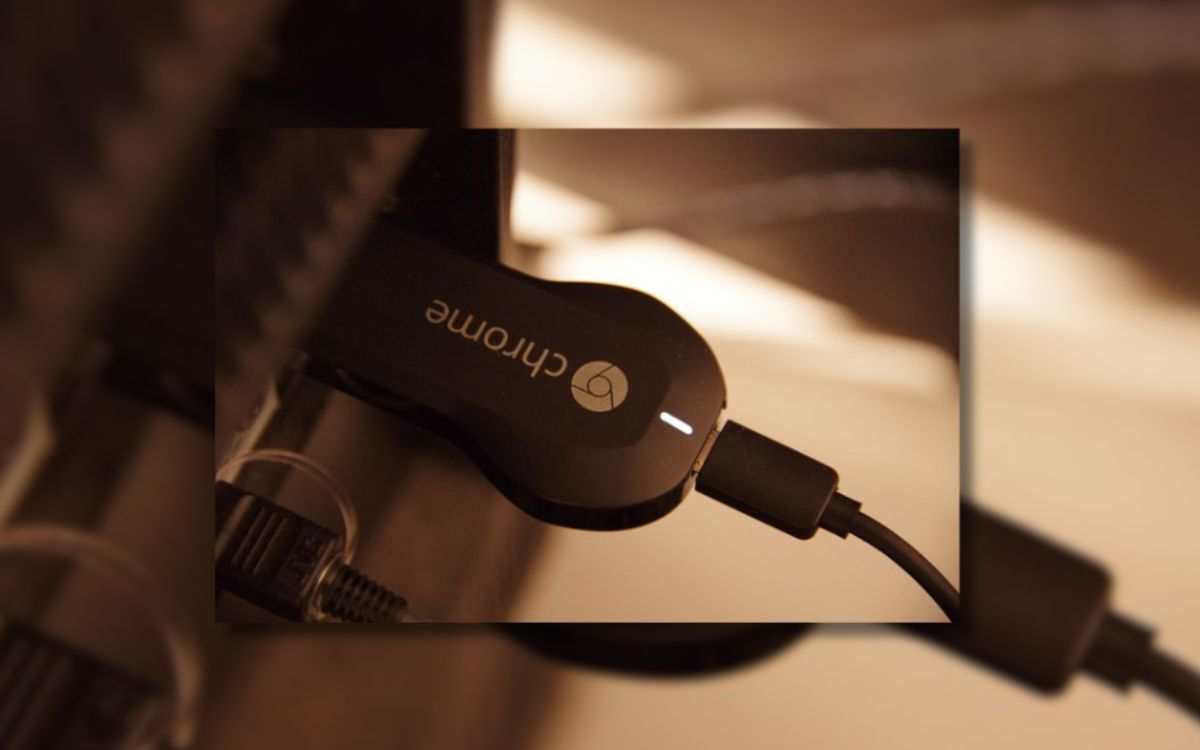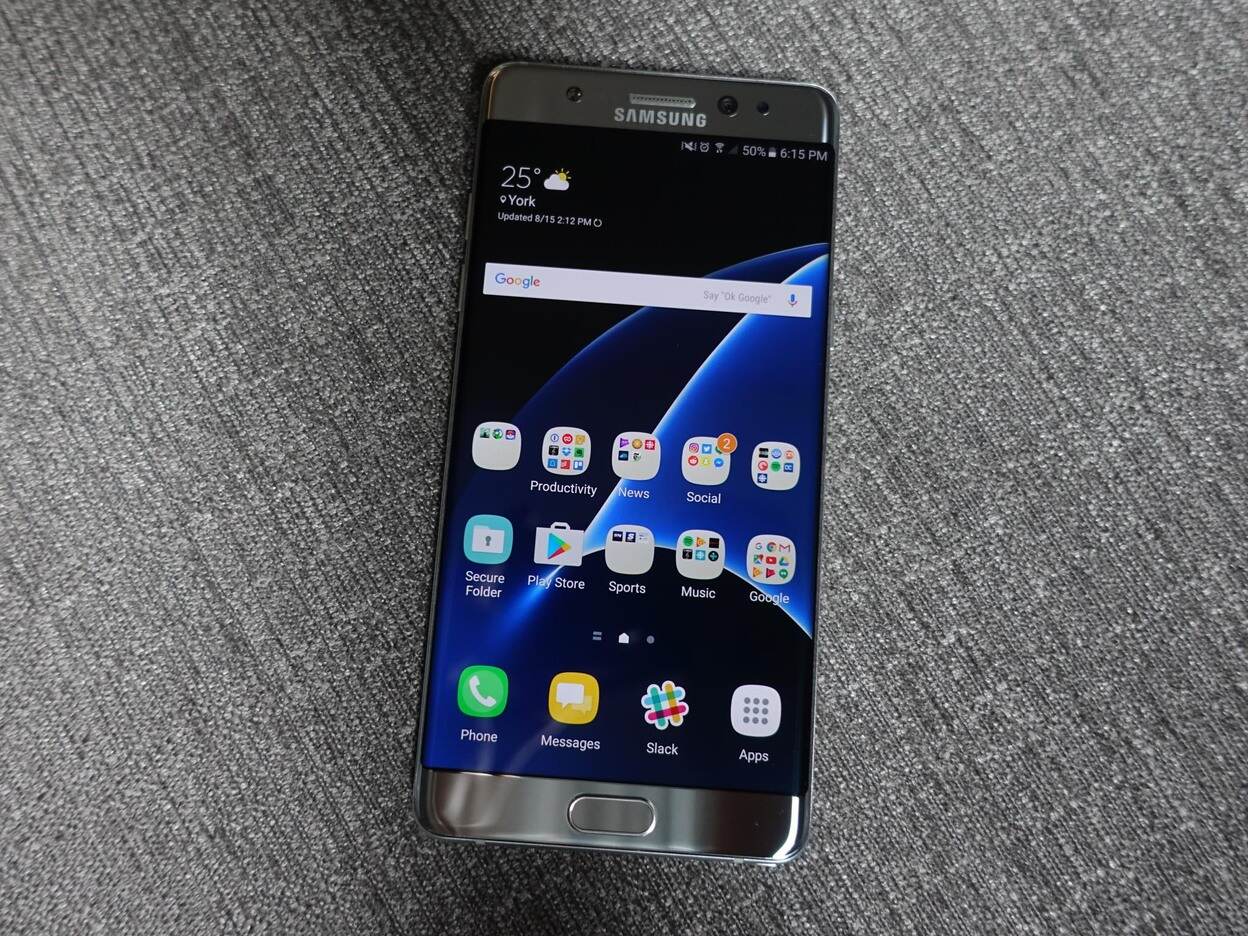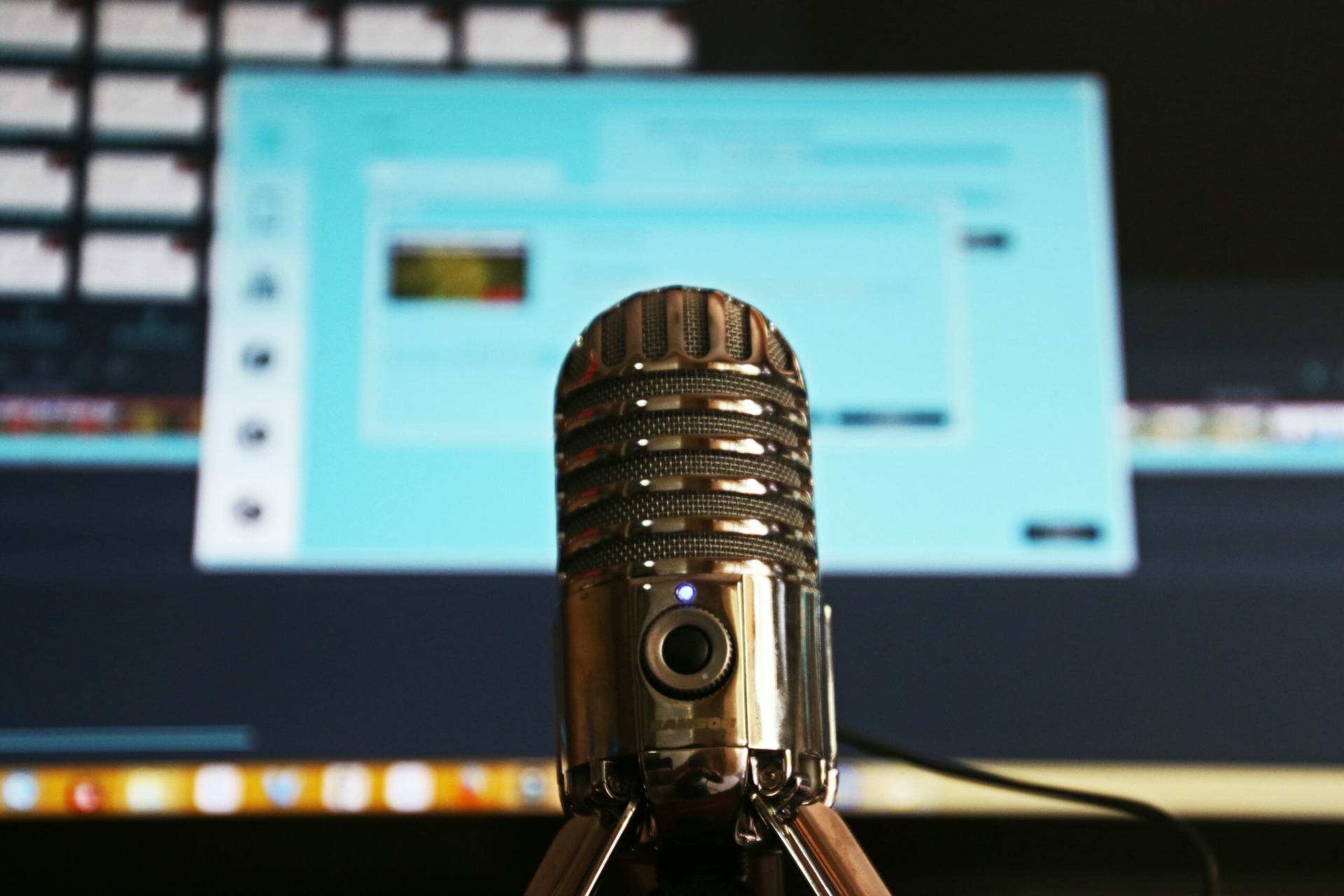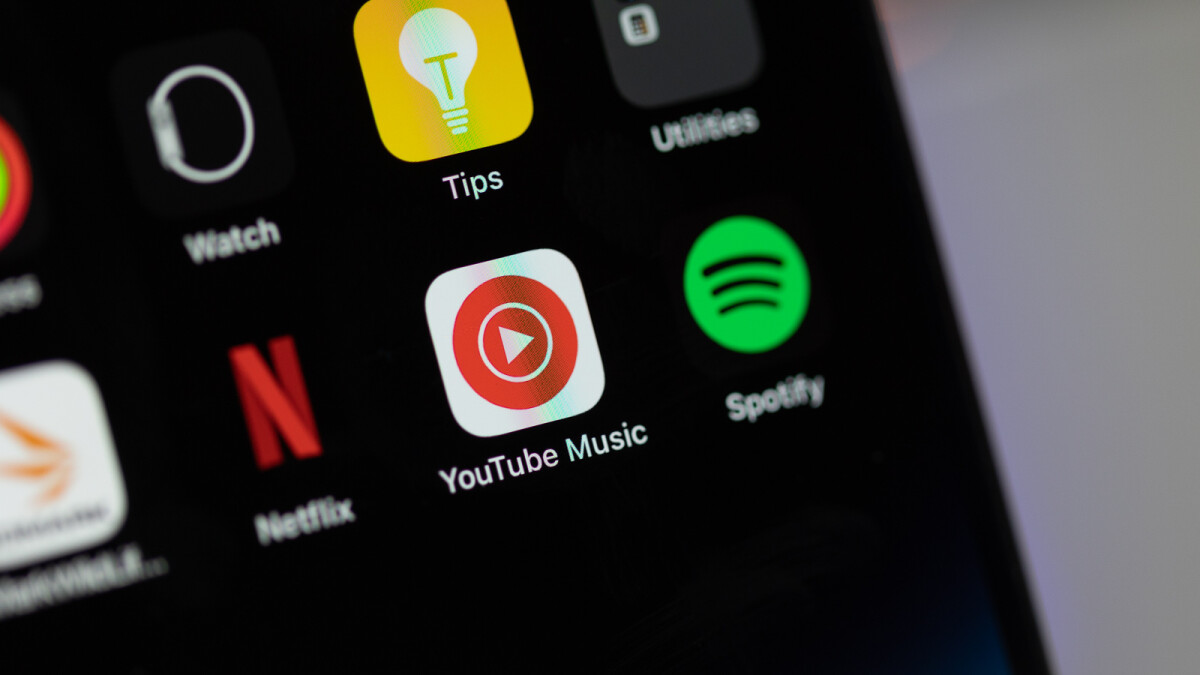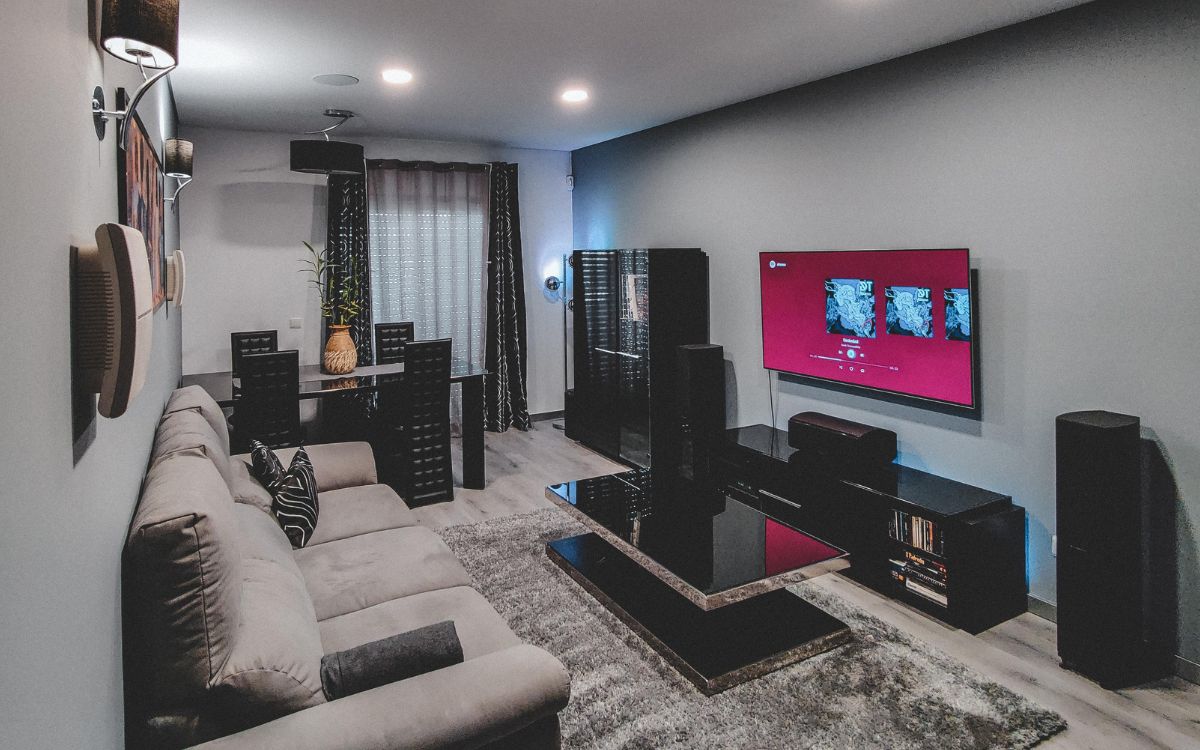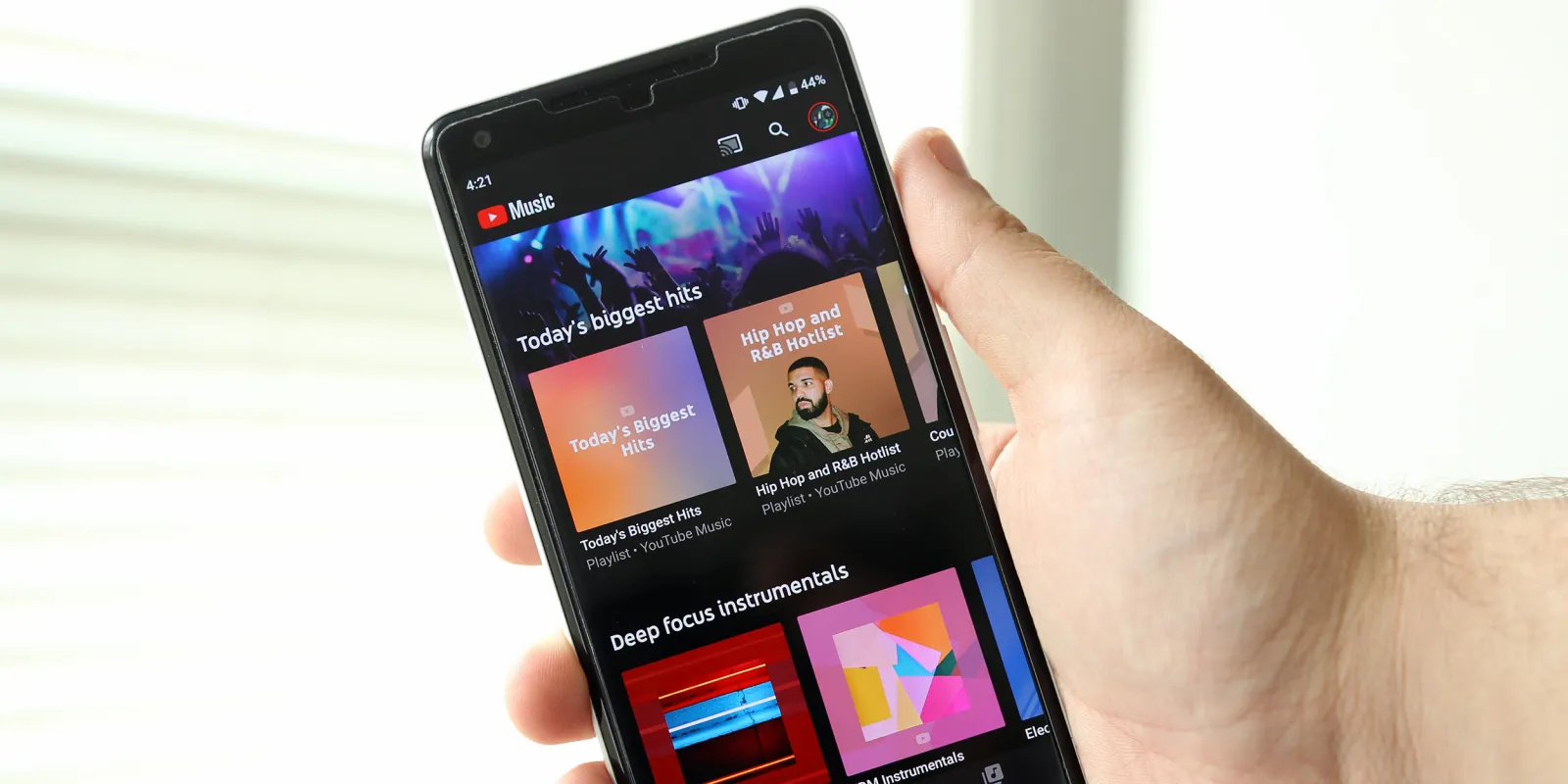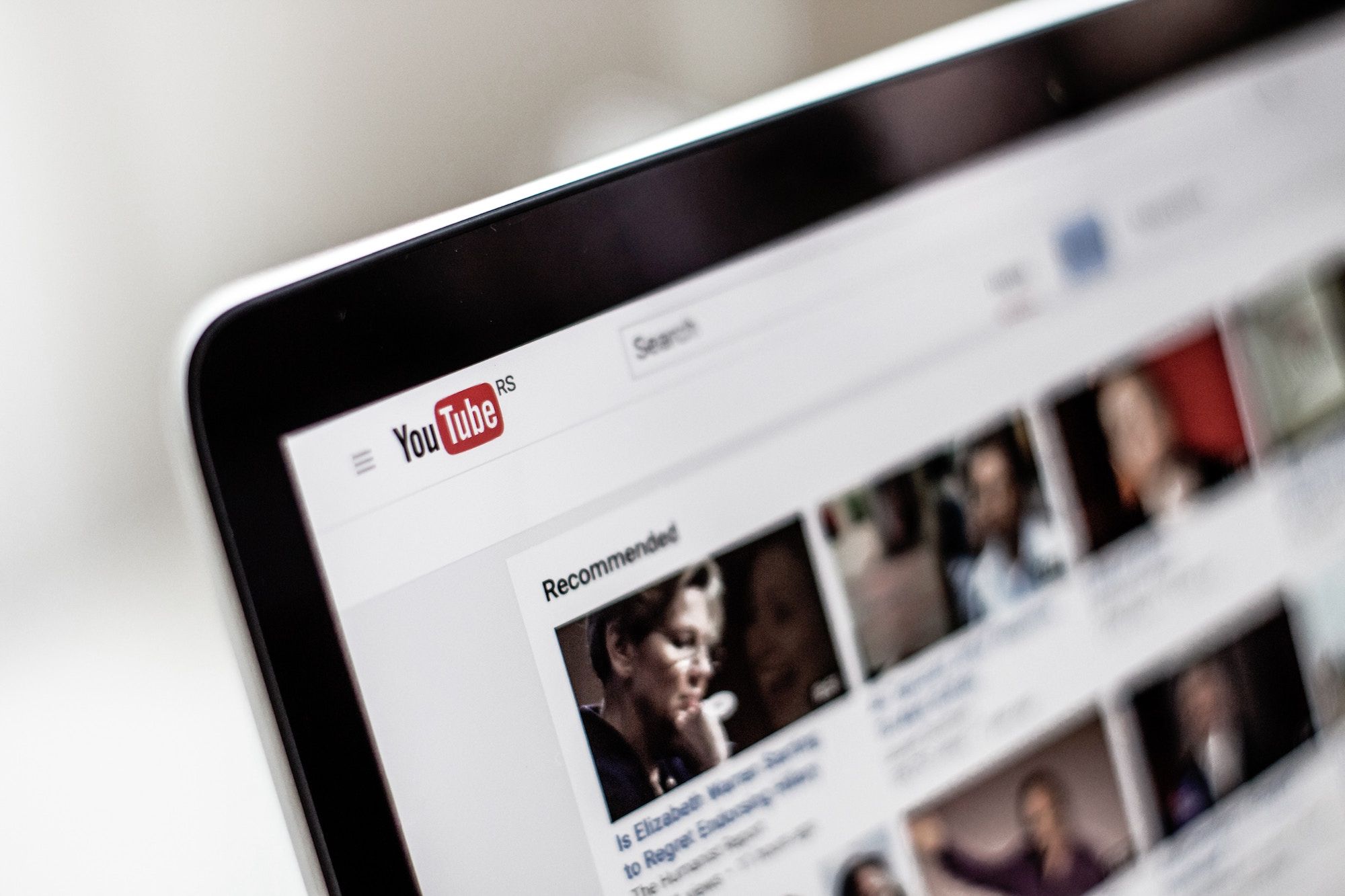Home>Devices & Equipment>Streaming>How To Get Music To Play Through YouTube While Streaming
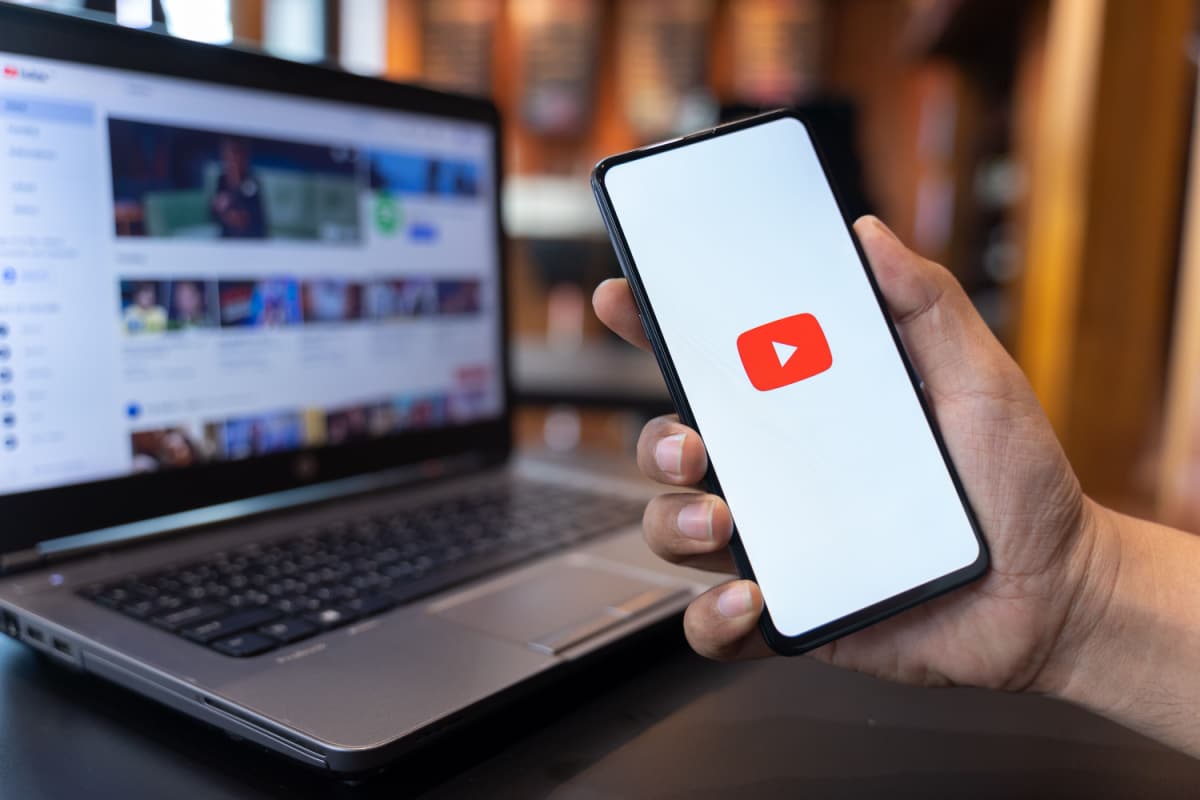

Streaming
How To Get Music To Play Through YouTube While Streaming
Published: March 7, 2024
Learn how to play music through YouTube while streaming to enhance your content. Discover the best methods for seamless music integration.
(Many of the links in this article redirect to a specific reviewed product. Your purchase of these products through affiliate links helps to generate commission for AudioLover.com, at no extra cost. Learn more)
Table of Contents
Introduction
Streaming has become an integral part of modern entertainment, allowing individuals to share their experiences, talents, and creativity with a global audience. Whether you're a seasoned streamer or just starting out, creating an engaging and immersive streaming environment is crucial. One key element that can significantly enhance the viewer experience is the use of music. Music has the power to set the mood, create ambiance, and captivate your audience, making it an invaluable asset for streamers.
When it comes to streaming on platforms like YouTube, incorporating music into your live streams can elevate the overall quality and appeal. However, navigating the intricacies of playing music through YouTube while streaming can be a daunting task for many content creators. This is due to the platform's strict copyright policies and the limitations it imposes on playing copyrighted music during live streams.
In this comprehensive guide, we will delve into the various methods and techniques for getting music to play through YouTube while streaming. From understanding the YouTube streaming setup to utilizing third-party software and setting up virtual audio cables, we will explore the intricacies of integrating music seamlessly into your live streams. Additionally, we will provide valuable tips to ensure a smooth and uninterrupted streaming experience for both you and your audience.
By the end of this guide, you will have a deeper understanding of the tools and strategies at your disposal to incorporate music into your YouTube live streams effectively. Whether you're looking to add background music, host live DJ sets, or create a dynamic audiovisual experience, this guide will equip you with the knowledge and resources to take your streaming endeavors to the next level.
So, let's embark on this journey to unlock the potential of music in your YouTube live streams and elevate the overall quality of your content. Whether you're a gaming enthusiast, a musician, an artist, or a vlogger, the ability to seamlessly integrate music into your live streams will undoubtedly enrich the viewer experience and set the stage for memorable and captivating content.
Understanding the YouTube Streaming Setup
Before delving into the intricacies of playing music through YouTube while streaming, it's essential to gain a comprehensive understanding of the platform's streaming setup. YouTube provides content creators with a robust and versatile streaming infrastructure, enabling them to engage with their audience in real time. Whether you're hosting a gaming session, conducting a live tutorial, or showcasing a musical performance, YouTube's streaming capabilities offer a dynamic platform for content dissemination.
YouTube Live Streaming Interface
The YouTube Live Streaming interface serves as the central hub for managing and initiating live streams. Content creators can access this interface through their YouTube Studio dashboard, where they can schedule, start, and monitor live streams. The interface provides essential features such as stream key and stream URL generation, stream health monitoring, and real-time engagement metrics. Understanding the layout and functionality of this interface is crucial for seamlessly integrating music into your live streams.
Copyright and Content Policies
YouTube enforces strict copyright and content policies to protect intellectual property and ensure fair use of copyrighted material. When it comes to playing music during live streams, content creators must be mindful of these policies to avoid copyright infringement and potential content takedowns. YouTube's Content ID system automatically scans and identifies copyrighted music within live streams, prompting actions such as muting audio or disabling the stream if unauthorized content is detected.
Integrating Music Sources
YouTube offers various methods for integrating music sources into live streams. Content creators can leverage the platform's built-in audio library, which provides a diverse collection of royalty-free music and sound effects for use in videos and live streams. Additionally, YouTube's integration with music streaming services such as Epidemic Sound and Soundstripe enables creators to access licensed music for their live streams, ensuring compliance with copyright policies.
Stream Configuration and Settings
Configuring the stream settings is a critical aspect of the YouTube streaming setup. Content creators can define parameters such as stream resolution, bitrate, and latency settings to optimize the streaming experience for both themselves and their audience. Understanding these settings is essential for achieving high-quality audio output when playing music during live streams.
By familiarizing yourself with the YouTube streaming setup, including the interface, copyright policies, music integration options, and stream configuration, you can lay the groundwork for seamlessly incorporating music into your live streams. This foundational knowledge will serve as a springboard for exploring the various methods and techniques for playing music through YouTube while streaming, which we will delve into in the subsequent sections.
Using Third-Party Software to Play Music
When it comes to playing music through YouTube while streaming, leveraging third-party software can offer a versatile and customizable approach. Third-party software solutions provide content creators with enhanced control over the audio output, enabling seamless integration of music into live streams. One popular choice among streamers is the use of virtual audio mixing software, such as VoiceMeeter and OBS Studio, to manage audio sources and route them effectively during live streams.
Virtual Audio Mixing Software
Virtual audio mixing software serves as a powerful tool for streamers seeking to play music through YouTube while streaming. These applications allow users to create virtual audio channels, manipulate audio sources, and define audio routing configurations, providing a high degree of flexibility and customization. By utilizing virtual audio mixing software, content creators can achieve a balanced audio mix, ensuring that music playback does not overpower other audio elements, such as microphone input or in-game sound effects.
Seamless Integration with Streaming Platforms
Third-party software solutions seamlessly integrate with popular streaming platforms, including YouTube, offering native support for audio capture and routing. This integration enables content creators to designate specific audio sources, such as music playback applications or browser-based music players, and route them directly to the streaming platform without interfering with other audio channels. As a result, streamers can curate a tailored audio experience for their audience, enhancing the overall production quality of their live streams.
Customizable Audio Sources
One of the key advantages of using third-party software is the ability to incorporate a wide range of audio sources into live streams. Content creators can leverage virtual audio mixing software to capture audio from multiple sources simultaneously, including music players, external audio interfaces, and virtual instruments. This versatility empowers streamers to curate diverse and engaging audio content, whether they are hosting live music performances, DJ sets, or interactive listening sessions.
Enhanced Control and Monitoring
Third-party software solutions offer comprehensive control and monitoring capabilities, allowing content creators to adjust audio levels, apply real-time effects, and monitor audio signals during live streams. This level of control is invaluable for maintaining a balanced audio mix and addressing any potential audio issues that may arise during live broadcasts. Additionally, the ability to monitor audio sources in real time ensures that music playback remains consistent and synchronized with the overall stream content.
By leveraging third-party software to play music through YouTube while streaming, content creators can elevate the auditory experience of their live streams, captivate their audience, and create a dynamic and immersive environment. The seamless integration, customizable audio sources, and enhanced control provided by third-party software solutions empower streamers to curate captivating audiovisual experiences that resonate with their viewers. As we continue to explore the methods for integrating music into YouTube live streams, the utilization of third-party software stands out as a versatile and impactful approach for enhancing the overall quality of streaming content.
Setting Up Virtual Audio Cables
Setting up virtual audio cables is a fundamental aspect of integrating music into YouTube live streams, offering a versatile and dynamic approach to audio routing and management. Virtual audio cables, also known as virtual audio routing software, enable content creators to create virtual audio channels, route audio between different applications, and manipulate audio signals in real time. This capability is particularly valuable when playing music through YouTube while streaming, as it allows for precise control over audio sources and destinations.
Understanding Virtual Audio Cables
Virtual audio cables function as virtual patch cables, facilitating the transfer of audio signals between software applications and system components. These virtual cables create virtual input and output endpoints, allowing content creators to establish custom audio paths and configurations. By leveraging virtual audio cables, streamers can designate specific audio sources, such as music playback applications or digital audio workstations, and route them to the streaming platform without affecting other audio channels.
Installation and Configuration
The process of setting up virtual audio cables typically involves installing dedicated virtual audio routing software, such as VB-Audio Virtual Cable or Voicemeeter Banana, on the streaming workstation. Once installed, content creators can configure the virtual audio cables to create virtual input and output endpoints, effectively establishing a virtual audio routing infrastructure. This infrastructure enables streamers to capture audio from designated sources, manipulate audio signals, and route them to the streaming platform, ensuring seamless integration of music into live streams.
Audio Routing and Mixing
Virtual audio cables empower content creators to orchestrate complex audio routing and mixing scenarios, allowing for the integration of multiple audio sources into live streams. Streamers can route music playback from applications such as Spotify, iTunes, or digital audio workstations through virtual audio cables, directing the audio output to the streaming platform while maintaining independent control over audio levels and effects. This level of customization enables streamers to curate a tailored audio experience for their audience, enhancing the overall production quality of their live streams.
Synchronization and Latency Management
When setting up virtual audio cables for music playback during live streams, synchronization and latency management are critical considerations. Virtual audio routing software offers tools and settings to address latency issues, ensuring that music playback remains synchronized with the stream content and other audio elements. By fine-tuning latency parameters and monitoring audio synchronization in real time, content creators can deliver a seamless and immersive audiovisual experience to their viewers.
Leveraging Advanced Features
In addition to basic audio routing and management, virtual audio cables often incorporate advanced features such as audio mixing, channel grouping, and real-time effects processing. These features empower content creators to refine the audio output, apply custom effects to music playback, and create captivating audio landscapes within their live streams. By harnessing the advanced capabilities of virtual audio routing software, streamers can elevate the auditory experience of their content and captivate their audience with rich and immersive soundscapes.
By mastering the setup and utilization of virtual audio cables, content creators can unlock a wealth of creative possibilities for integrating music into YouTube live streams. The flexibility, control, and customization offered by virtual audio cables empower streamers to curate captivating audiovisual experiences that resonate with their audience, setting the stage for memorable and engaging live stream content. As we continue to explore the methods for seamlessly incorporating music into YouTube live streams, the strategic implementation of virtual audio cables emerges as a pivotal tool for enhancing the overall quality and appeal of streaming content.
Tips for a Smooth Streaming Experience
-
Optimize Audio Levels: Maintaining balanced audio levels is crucial for a seamless streaming experience. Ensure that music playback, microphone input, and other audio sources are appropriately leveled to prevent audio distortion or imbalance.
-
Test Audio Configurations: Before going live, conduct thorough testing of your audio configurations to identify and address any potential issues. Verify that music playback is clear, synchronized, and seamlessly integrated with the overall audio mix.
-
Monitor Stream Health: Keep a close eye on the stream health indicators provided by YouTube's streaming interface. Monitoring metrics such as stream bitrate, frame rate, and audio quality can help preemptively address any technical issues that may impact the streaming experience.
-
Engage with Viewers: Interact with your audience and seek feedback on the audio quality and music integration during your live streams. This direct engagement not only fosters a sense of community but also provides valuable insights for refining your audio setup.
-
Stay Informed on Copyright Policies: Regularly review and stay informed about YouTube's copyright policies, especially regarding music usage during live streams. Understanding these policies can help you navigate potential copyright issues and ensure compliance with platform guidelines.
-
Backup Audio Sources: In the event of technical glitches or unexpected interruptions, have backup audio sources readily available. This proactive measure can mitigate disruptions and maintain a consistent audio experience for your viewers.
-
Utilize Stream Annotations: Leverage YouTube's stream annotations to provide real-time information about the music being played, including track titles, artist names, and relevant links. This enhances transparency and allows viewers to discover and engage with the music featured in your live streams.
-
Collaborate with Musicians and Artists: Consider collaborating with musicians and artists who offer original music for use in live streams. This collaborative approach not only enriches your content but also fosters partnerships within the creative community.
-
Seek Audience Input on Music Selection: Encourage your audience to participate in music selection by incorporating interactive polls or requests during your live streams. This interactive approach enhances viewer engagement and creates a personalized music experience.
-
Regularly Update Music Selection: Keep your music selection fresh and diverse to cater to varied audience preferences. Regularly updating your music library ensures that your live streams remain engaging and dynamic.
By implementing these tips, content creators can enhance the overall quality of their live streams, create captivating audiovisual experiences, and foster a loyal and engaged audience. These strategies not only contribute to a smooth streaming experience but also elevate the impact and appeal of music integration in YouTube live streams.
Conclusion
In conclusion, the integration of music into YouTube live streams presents a myriad of opportunities for content creators to elevate the overall quality and appeal of their streaming content. By navigating the complexities of playing music through YouTube while streaming, streamers can create dynamic and immersive audiovisual experiences that resonate with their audience. Throughout this guide, we have explored various methods and techniques for seamlessly incorporating music into live streams, from leveraging third-party software to setting up virtual audio cables. Additionally, we have provided valuable tips for ensuring a smooth and engaging streaming experience.
The strategic utilization of third-party software, such as virtual audio mixing applications, empowers content creators to curate captivating audio landscapes, seamlessly integrate music sources, and maintain precise control over audio routing and mixing. This approach not only enhances the auditory experience of live streams but also fosters a deeper connection with viewers through immersive soundscapes and dynamic audio content.
Furthermore, the setup and utilization of virtual audio cables offer a versatile and dynamic approach to audio routing and management, enabling streamers to orchestrate complex audio configurations, synchronize music playback, and deliver a seamless and immersive audiovisual experience to their audience. The flexibility, control, and customization provided by virtual audio cables serve as a pivotal tool for enhancing the overall quality and appeal of streaming content.
In addition to exploring technical methods for integrating music into live streams, we have provided valuable tips for content creators to optimize their audio setups, engage with viewers, and navigate copyright policies effectively. These tips not only contribute to a smooth streaming experience but also foster a sense of community and collaboration within the streaming environment.
As content creators continue to explore the creative possibilities of music integration in YouTube live streams, it is essential to stay informed about platform policies, engage with the audience, and leverage innovative tools and techniques to deliver captivating and memorable content. By embracing the power of music, streamers can enrich their live streams, captivate their audience, and create a vibrant and engaging streaming environment.
Ultimately, the seamless integration of music into YouTube live streams represents a harmonious fusion of creativity, technology, and community engagement. As content creators embark on this journey, they have the opportunity to craft compelling narratives, evoke emotions, and leave a lasting impact on their viewers through the transformative power of music. With the knowledge and resources gained from this guide, content creators are poised to embark on a captivating and melodious streaming adventure, setting the stage for memorable and immersive content experiences.

